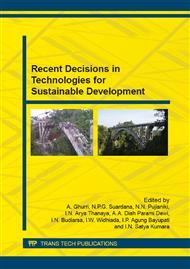p.319
p.325
p.331
p.337
p.343
p.349
p.355
p.361
p.371
Geometric Progression Application in Design Transmission Gear Ratio
Abstract:
One of the important aspects in determining the competitiveness of an automotive product is the traction ability or performance, the vehicle's ability to accelerate, wind resistance, rolling resistance, against the force of the ramp, and the capacity to pull a load. The size of traction for any level of gear and vehicle speed that can be achieved can be controlled by adjusting the ratio and transmission rate. Transmission ratio affects the amount of torque that can be transmitted, while the number of speed levels affects the fineness of the process of transmission and transformation of power in the transmission system. To find a gear ratio between the lowest and highest transmission rate is by geometric progression. The basis of the use of this method is to get the ratio and amount of gear transmission rate of speed at the same engine operating speed so that fuel economy will be the same on each transmission. Modified gear ratio produce traction curve where the distance curve closer adjacent transmission. This indicates a loss of power transmission shifting is getting smaller or in other words the better traction performance. The design of the installation ratio 6-speed, generating traction curve with the distance between the curve near the sting traction, produces good traction or good performance.
Info:
Periodical:
Pages:
343-348
Citation:
Online since:
July 2015
Price:
Сopyright:
© 2015 Trans Tech Publications Ltd. All Rights Reserved
Share:
Citation:


